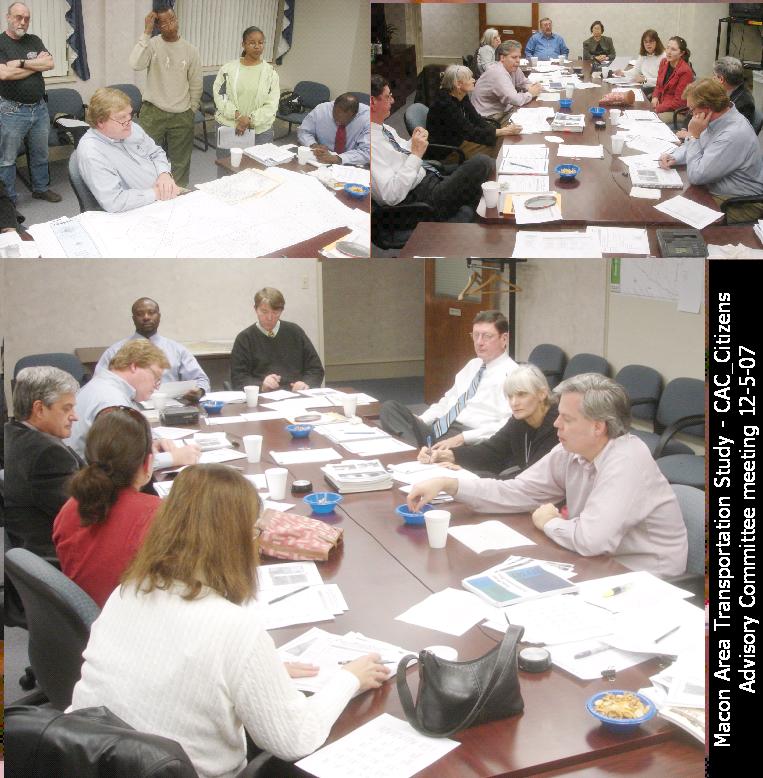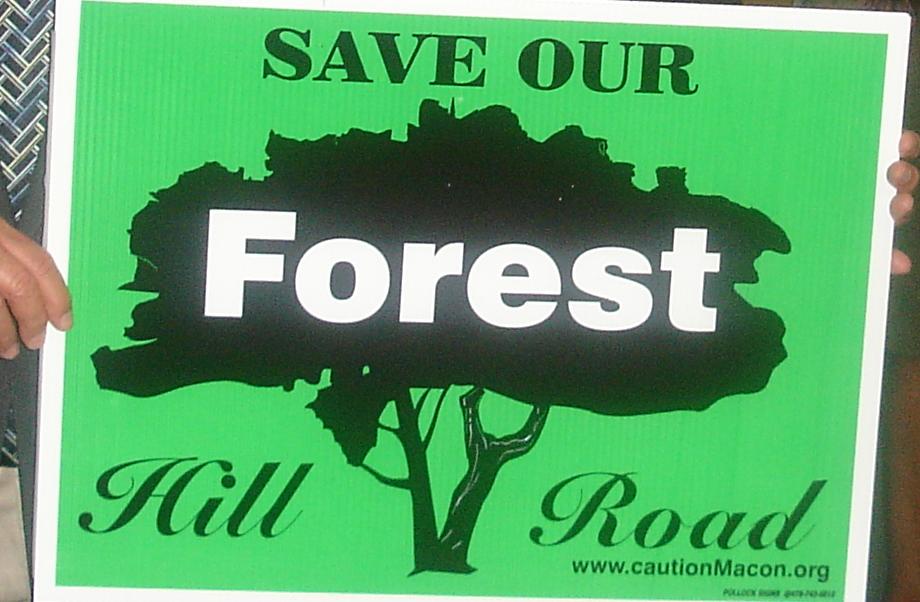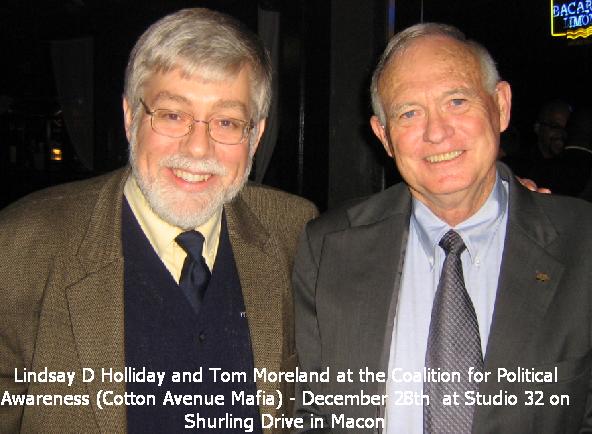|
A
NEW CAUTION: Macon's roadbusters
Familiar
fight:
Middle
Georgia road-builders, many residents are locked in
struggle over growth.
Dan
Chapman - Staff - www.AJC.com
Monday,
May 8, 2000
Macon ---
The hairdresser feared her mostly rural community would
turn into an industrial park.
The college
administrator suspected neighborhood streets might be
five-laned.
The
housewife envisioned a bulldozer toppling the towering
magnolia where her children play.
"What we all
have in common," says Suzan Rivers, the housewife, "is a
love of this city. We don't want it to get torn up."
They ---
housewives, teachers, retirees, preachers, architects,
dentists, lawyers, foresters, doctors --- also didn't
want this midsize central Georgia city to turn into
another traffic- and sprawl-fueled Atlanta. So they
banded together to fight City Hall, transportation
officials and the road-builders who are spending $320
million paving miles of Bibb County.
"Why can't
Macon learn from Atlanta's mistakes?" asks Lee Martin, a
small businessman whose 1960s idealism was rekindled by
the road-building battles.
Martin,
Rivers and dozens of other activists decided Atlanta's
history is, indeed, replete with sprawl-busting lessons.
Their education can be summed up in a word: CAUTION.
Citizens
Against Unnecessary Thoroughfares in Old Neighborhoods
--- CAUTION Inc. --- was formed in 1982 to combat plans
to build a highway from downtown Atlanta east toward
Stone Mountain. If built, neighborhoods like Druid Hills
and Candler Park would have been ripped apart.
For 20
years, it was a citizens-vs.-developers battle played
out in courtrooms, jail cells, kudzu-filled fields and
politicians' chambers. More than 500 homes and untold
acres of land were leveled.
In the end,
though, CAUTION prevailed. Today, the Freedom Parkway
meanders 3.1 miles from the Downtown Connector, past
Jimmy Carter's presidential library and public-policy
center, before dead-ending at one of Atlanta's most
cherished parks.
CAUTION
Macon fights strikingly similar --- and, at times, nasty
--- battles. Name-calling. Lawsuits. Allegations of
wasteful spending, political chicanery, conflicts of
interest.
Dan Fischer,
a former urban planner and city administrator in
Colorado, accuses city, county and state officials of
not fully informing Bibb County residents of the
magnitude of the road-building projects.
"My
experience in local government didn't prepare me for
Macon government," says Fischer, now an administrator at
Mercer University. "It's when they started doing
obviously unjustified damage to neighborhoods that
people realized there was something illogical about the
process. They were willing to sacrifice the integrity of
in-lying neighborhoods strictly to accommodate suburban
sprawl."
Hogwash,
responds Larry Justice, the longtime Bibb County
commissioner who calls CAUTION "an outside group of
agitators."
"Here's
where I have a problem with these CAUTION people: They
do not want growth," says Justice, a commissioner for 28
years. "They're being shortsighted. They're not looking
down the road for their children and their
grandchildren."
CAUTION has
won and lost road-building battles during its two-year
fight. Its most recent defeat came in February, when a
federal judge dismissed CAUTION's lawsuit to keep a
two-lane road from turning into a five-lane
thoroughfare. Yet even its critics agree CAUTION has
changed the democratic dynamic in once-placid Bibb
County.
'We
want to catch up'
Robert
Fountain gleans different lessons from Atlanta's
history. As Bibb County engineer, Fountain ascribes to
the grow-or-die theory of economic development. Good
roads attract business. New business keeps property
taxes down. Lower taxes equal happier citizens.
"Ideally, I
see us as a second hub to Atlanta in economic growth,"
says Fountain, county engineer for 26 years. "We want to
catch up. Since the '40s, we haven't spent any money on
this town. This is the best thing to happen to this
whole community."
Fountain and
others envision the transformation of this old mill town
into a distribution hub with rail lines and four-lane
roads heading in all compass directions. One of the
keys, Fountain and others say, is to improve and expand
the roads leading to the Perimeter-like beltway.
The Fall
Line Freeway would serve as one leg of the
triangle-shaped outer belt. Planned as a 215-mile
highway linking Augusta with Columbus through Middle
Georgia, the stretch around Macon remains in limbo. The
road-bulders' preferred route runs through
environmentally sensitive wetlands and near the Ocmulgee
National Monument and burial grounds.
State and
local transportation officials say their route wouldn't
unnecessarily damage the 20,700 acres of "cultural
property" considered historically important to the
Muscogee Indian Nation. They're submitting an
environmental assessment to the feds this month for
approval.
Roughly a
third of the $320 million in state, federal and local
road-building money would help finish the Fall Line
Freeway. While many a CAUTION member individually
opposes the road's local segment, the group hasn't taken
an official position.
Macon, whose
air grows increasingly polluted each year, is expected
to achieve this summer the same dubious air-quality
non-attainment distinction that Atlanta already owns. If
so, future road-building projects --- and Bibb County's
hoped-for growth --- may be slowed.
Yet Macon
barely grows now. With 115,000 citizens, it averages
less than 1 percent growth per year. Fountain says the
region averages maybe 6 percent growth.
But critics
consider that insufficient to justify 62 road projects.
"All they're
doing is taking federal money and just laying down
asphalt without rhyme or reason," says CAUTION's Tom
Scholl, an ordained minister. "We want every dime of the
money spent. We just don't want them to spend it where
they want to spend it."
"Pennies for
Progress" is how Macon and Bibb County officials ---
with a healthy assist from Atlantan Tom Moreland's
engineering and program management firm --- campaigned
for their road-building referendum in 1994. With an
additional plea for Macon's future economic viability,
the 1 percent sales tax proposal garnered a slim
majority of Bibb County voters.
More than
$130 million has since been raised locally.
Grass-roots
effort
Graders and
dump trucks crisscrossed Bibb County. Downtown roads
were expanded and repaved. Front yards in intown,
suburban and rural communities were ripped up to make
room for two-, three- and five-lane roads. The goal
remains to ease congestion and make smooth the drive
from city to suburb to country.
By September
1998, the road-building revulsion had crested. CAUTION
Macon was formed, largely with the moral and technical
support of its Atlanta kin --- including Tom Marney, Jim
Chapman and Mary Norwood --- and the financial backing
of more than 1,000 Maconites.
The
grass-roots organization mobilized quickly and
effectively. Core members focused on specific topics.
Scholl, for example, crunches traffic counts and growth
projections. Rivers researches historical precedents.
Susan Hanberry, a middle-school teacher, is the
environmental whiz. The Internet is tapped for
information about road battles across the country, as
well as to keep CAUTION members and journalists informed
(www.cautionmacon.org.).
Neighborhood
associations and politicians were mobilized. In historic
College Hill, neighbors tied hundreds of yellow ribbons
around threatened magnolias. Similar acts of protest
took place in the predominantly black neighborhood
surrounding Jeff Davis/ Telfair Street.
CAUTION
railed against poor planning, in general, and
unfaithfulness to the county's land-use plan, in
particular. The crux of CAUTION's discontent, though,
was a feeling that the integrity of intown neighborhoods
was being compromised to further suburban sprawl and the
industrialization of Bibb County.
Justice, the
chairman of the county commission the last 11 years,
scoffs at CAUTION's assertion, insisting traffic counts
and Macon's development as a regional job,
entertainment, medical and educational hub justifies its
road-building largesse.
"All this
hoopla about sprawl is ridiculous," he says. "We don't
want to see another Atlanta in Macon. But at the same
time, we do want to see good, solid growth."
CAUTION,
further miffed that some projects changed dramatically
post-referendum, was fed up. A show of force was needed.
Roughly
1,000 people showed up for CAUTION's September 1998
kickoff rally in front of Macon's courthouse. Their
grievances were many. But their immediate demands ---
most of which were met --- were few.
They wanted
nationally renowned and environmentally sensitive urban
planner Walter Kulash hired as a consultant. They wanted
finished road projects better landscaped. And they
wanted only elected officials to serve on the
road-building executive committee.
Even state
officials complained of the lack of citizen
participation.
In a
November 1998 letter to Macon's mayor, former state
historic preservation officer Mark Edwards wrote "there
seems to be a lack of meaningful public participation in
the local transportation planning process, at least
concerning impacts to historic properties." Edwards
later accused a top Georgia Department of Natural
Resources official of "making a mockery out of the
democratic process" in his "zeal" to build the Fall Line
Freeway.
Bibb
County's engineer acknowledges that public officials
should've been more considerate of citizens' concerns.
"We had a
lot of (input), but the timing may not have been the
best," Fountain says. "If I could do it all over again,
I would set up a system to bring in neighborhood
(residents) at the very, very beginning of the project."
Unmollified,
CAUTION decided to get tough. They needed a fight. They
found one on Houston Road.
A
crushing blow
Traffic is
light along Houston ("How-stun") Road as a minivan full
of CAUTION members wends through south Macon. They point
out their homes, their churches, the pecan orchards and
cotton fields. They ignore the yellow bulldozers, the
scraped-flat fields and the powerfully sweet smell of
uprooted trees.
CAUTION
latched on to Houston Road as the most egregious of
road-building projects. Prior to the referendum,
residents were told that only a turn lane would be added
to a 3.2-mile stretch of road. Post-referendum, they
learned Houston would become a five-lane thoroughfare.
"Little by
little, it went from two lanes to three lanes to five
lanes," recalls Marilyn Meggs, a
housewife-turned-activist. "They told us it was a done
deal."
CAUTION
filed a lawsuit last October to stop the $8 million
Houston Road project. The group said the Georgia
Department of Transportation failed to adequately
consider the road's environmental impact. Kulash, who
was hired by project manager Moreland Altobelli,
testified against Houston Road, saying it would
encourage strip development.
Kulash's
switch fueled a conflict-of-interest charge lodged by
the road-builders. They also said Kulash designed
projects without a Georgia engineer's license --- even
though he'd worked with them for months.
In February,
a federal judge denied CAUTION's request to halt the
Houston Road project. It was a crushing blow, but not a
fatal one.
CAUTION is
an undeniable force in Macon life. It has forced
road-builders to scale back projects in working-class
west Macon, upscale north Macon and historic downtown
Macon.
Citizens in
neighboring Monroe County now seek CAUTION's advice on
ways to combat road projects. The nonprofit sponsors
"smart growth" forums to gauge candidates' views.
It's
investigating ways to legislatively ensure road-builders
don't steamroll other smallish communities. CAUTION
members know once Macon's fight ends, road-building
battles will continue in other Georgia towns with
growth-at-all-costs politicians and pliant,
unsophisticated citizens.
"This is
little ol' Macon," says Suzan Rivers. "If this is
happening here, it's happening all over Georgia. Think
how many neighborhoods all over Georgia are being
destroyed."
http://www.accessatlanta.com/partners/ajc/epaper/editions/monday/business_93617573249d203910d2.html
|




